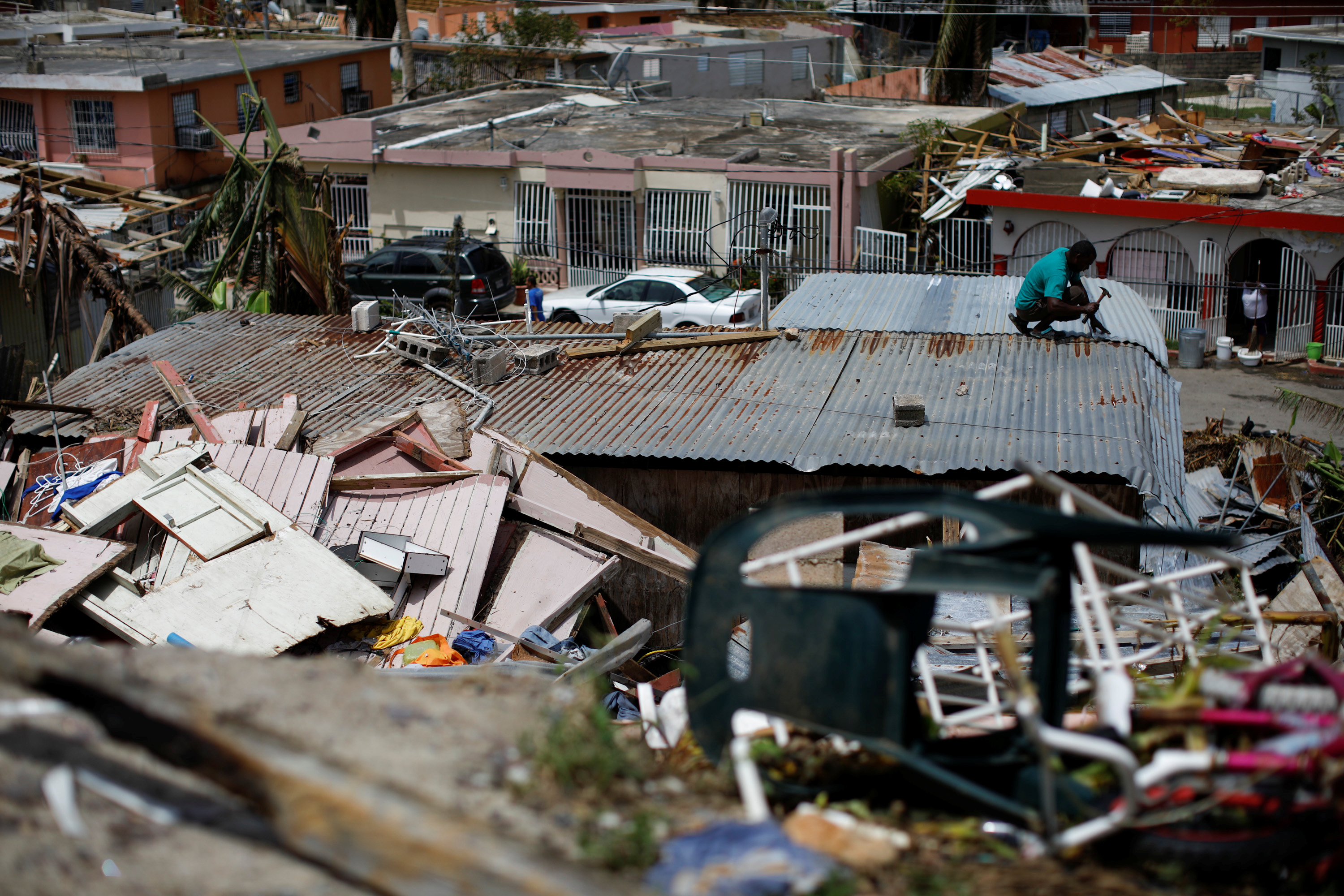How to rebuild Puerto Rico
It's time to take climate change seriously


If America learns anything from the disaster in Puerto Rico, it should be this: Prepare. Prepare. Prepare.
When Hurricane Maria slammed into Puerto Rico as a powerful category four storm on Sept. 20, it knocked out power for the vast majority of the island and killed at least 36 people. Three weeks later, more than one-third of Puerto Rico remains without clean drinking water and the overwhelming majority of the island still doesn't have electricity. It's a humanitarian emergency — and one that was eminently preventable.
Of course, there will always be destruction associated with catastrophic weather like hurricanes, especially now that climate change is making them even more powerful. But the damage can be lessened with two types of planning: Smart construction that makes buildings and infrastructure more resilient — or at least less foolhardy — and green construction that tries to keep global warming from happening at all. Unfortunately, Puerto Rico failed on both counts.
The Week
Escape your echo chamber. Get the facts behind the news, plus analysis from multiple perspectives.

Sign up for The Week's Free Newsletters
From our morning news briefing to a weekly Good News Newsletter, get the best of The Week delivered directly to your inbox.
From our morning news briefing to a weekly Good News Newsletter, get the best of The Week delivered directly to your inbox.
Take the island's infrastructure. Images of washed out roads and mud-covered highways leading out to rural areas have flooded the news. At one point, boxes of supplies sat in ports and airports unable to reach desperate victims because there was no way to navigate the debris-filled, crumbling roads that were unable to withstand Maria's fierce wind and rain. Cell phone towers were also destroyed, making communication between officials coordinating aid incredibly difficult.
While some destruction can always be expected, most of these problems were exacerbated by decades of local and federal neglect.
The power grid, for example, was struggling years before the storm hit. "Even if you had a modest wind storm, people would typically lose power for days at a time," Judith Enck, a former EPA official told CityLab in September. To make matters worse, the island relies on imports of oil and coal, two of the least sustainable and most expensive fuels, to generate power.
Puerto Rico's water system was also in trouble long before the storm. According to a report by the Natural Resource Defense Council, Puerto Rico had the worst rate of drinking water violations in any state or territory. So even when water is restored for the entire island, there is still going be to a huge risk of contamination.
A free daily email with the biggest news stories of the day – and the best features from TheWeek.com
There's also the issue of flood insurance. The Federal Emergency Management Authority creates flood maps that indicate which homes and communities are in flood zones. Everybody within those flood zones must purchase flood insurance through the National Flood Insurance Program, a federal program which subsidizes flood insurance for millions of people. But those flood maps are outdated. In Puerto Rico less than 1 percent of homeowners have insurance through the NFIP. Yet the flooding was devastating, coming into homes and forcing residents to flee to their roofs.
So simply rebuilding the island the way it was will not be enough. Any construction effort must take into consideration climate change. If Puerto Rico's power grid is going to be updated, it should be "smarter," more resilient, and not dependent on expensive, polluting imports. Solar would be a much more reliable, cheaper, and climate-friendly option. Similarly, Puerto Rico's poor water infrastructure must be rebuilt to a standard that fares better during storms. Roads and bridges should be constructed to withstand rising waters and fierce winds. Flood maps must be updated, and construction discouraged in vulnerable areas.
But even in the areas Puerto Rico has control over, it will be unable to handle this monumental rebuilding effort on its own. It is bankrupt, owing tens of billions of dollars to hedge funds and vulture funds, and its status as a U.S. territory means it cannot rely on bankruptcy protections to claw out of debt. It will need federal help.
The White House has already asked for $29 billion in hurricane relief, but Puerto Rico Gov. Ricardo Rosselló has said the sum will prove insufficient for emergency efforts alone. A total rebuild of the island's infrastructure would be even more expensive.
To his credit, President Trump has been touting a $1 trillion national infrastructure plan since the campaign trail, but to his discredit, it's highly unlikely his administration would take climate change into consideration during planning. In fact, the president reversed an Obama-era policy that did just that back in August. The rule would have required developers to consider flooding and other climate disasters before building new projects including roads and bridges. Trump decided that the measure was costing jobs.
Environmentalists warned that this was a bad idea. "This order will put people throughout the country at risk by allowing developers to ignore potential hazards," Alex Taurel, deputy legislative director of the League of Conservation Voters, said in a statement at the time. "[It] lets the government off the hook when it comes to constructing projects that should withstand flooding, putting lives at risk for the sake of speed over safety."
How we rebuild Puerto Rico could be a lesson in how other states and regions should prepare for disasters, but until the Trump administration and the American people reckon with the reality of climate change, we will continue to spend billions of dollars in rebuilding our towns and cities just to watch them be destroyed again when the next storm comes along.
Eventually, Puerto Rico will be rebuilt and aid groups and the federal government will claim success as children go back to their schools and hospitals re-open their doors. Everything will go back to normal ... until the next storm hits and we're forced to do it all over again.
Nathalie Baptiste is a journalist based in Washington, D.C. Her work has appeared in Mother Jones, The Nation, and The American Prospect.
-
 The ultimate films of 2025 by genre
The ultimate films of 2025 by genreThe Week Recommends From comedies to thrillers, documentaries to animations, 2025 featured some unforgettable film moments
-
 Political cartoons for January 3
Political cartoons for January 3Cartoons Saturday's political cartoons include citizen journalists, self-reflective AI, and Donald Trump's transparency
-
 Into the Woods: a ‘hypnotic’ production
Into the Woods: a ‘hypnotic’ productionThe Week Recommends Jordan Fein’s revival of the much-loved Stephen Sondheim musical is ‘sharp, propulsive and often very funny’
